World
In a dramatic twist, Pakistan’s former Prime Minister Imran Khan signaled a willingness to hold talks with the powerful military establishment, a move that could redefine his political future amid a deluge of legal troubles. Speaking to journalists at Adiala Jail in Rawalpindi, Khan expressed his desire for dialogue, emphasizing that his past criticisms were never accusations but constructive feedback aimed at fostering democracy.Imran Khan, now 71, has found himself at a political crossroads, battling numerous cases that have embroiled him, his wife Bushra Bibi, and senior leaders of his party, Pakistan Tehreek-e-Insaf (PTI). Khan likened the military to a spoiled child in a household, explaining that just as a wayward child is critiqued for betterment, so too was his criticism of the military—a crucial component of democratic governance, according to him. This analogy, reported by The Express Tribune, reflects Khan's attempt to mend fences with the institution that has historically played a dominant role in Pakistan’s political landscape.The context of Khan’s recent overtures is a legal and political quagmire. His wife, Bushra Bibi, has been named as a suspect in 11 cases, including an attack on the army headquarters on May 9, 2023. On the same day, Khan sought bail from an Anti-Terrorism Court in 12 cases linked to the riots that erupted nationwide after his arrest by the National Accountability Bureau (NAB) over a 190-million-pound corruption case. These riots marked a significant escalation in the confrontation between Khan's supporters and the state apparatus.The Pakistani military, often seen as the ultimate power broker in the country, has ruled directly or influenced political developments for decades. Khan’s current predicament, with over 200 cases against him and prolonged imprisonment, underscores the fraught relationship between civilian leaders and the military establishment. His judicial remand has kept him at Adiala Jail, a high-security facility in Rawalpindi, since August last year.Despite his legal battles, Khan’s rhetoric has shifted subtly. He insists that his past remarks were not accusations but necessary criticisms. He pointed out historical instances, such as General Ziaul Haq’s role in the execution of former Prime Minister Zulfikar Ali Bhutto and General Yahya Khan’s responsibility for the fall of Dhaka, to highlight that military mistakes have been acknowledged before. Criticism, according to Khan, should not be silenced if injustices occur.This change in tone could be seen as a strategic move to alleviate the relentless pressure from the military. However, as of now, there has been no indication from the military establishment to ease the legal and political siege on Khan. His mixed signals about reconciliation reflect the complexity of navigating Pakistan's military-civilian dynamics.Imran Khan’s political journey, from a cricketing legend to a beleaguered former prime minister, is now intertwined with his attempts to reestablish a working relationship with the military. Whether this new stance will pave the way for his political rehabilitation or further entrench his woes remains to be seen. For now, Khan appears to be betting on dialogue as a means to find a way out of his current impasse.
Read More → Posted on 2024-07-31 15:26:30World
In a shocking development, Hamas announced that its political leader, Ismail Haniyeh, was killed in an Israeli strike in Tehran. Haniyeh had traveled to Iran to attend the inauguration of the country’s new president, Masoud Pezeshkian. The announcement was made on Wednesday, marking a significant escalation in the already tense Middle Eastern conflict.The circumstances surrounding Haniyeh's death remain somewhat unclear. According to Iran's Revolutionary Guards, Haniyeh's residence in Tehran was targeted and hit, resulting in his death along with a bodyguard. The Islamic Revolutionary Guard Corps' Sepah news website confirmed the incident, though it noted that the exact cause was still under investigation.This event follows closely on the heels of an Israeli strike in southern Beirut, where a senior Hezbollah commander was killed. The commander was alleged to be responsible for a recent rocket attack on the Israel-annexed Golan Heights. Israeli Prime Minister Benyamin Netanyahu has been vocal about his commitment to destroying Hamas and securing the release of all hostages taken during the recent conflicts.Ismail Haniyeh was a prominent figure in Hamas, having been elected as the head of its political bureau in 2017. Before this role, he served as the Palestinian prime minister in 2006 after Hamas' surprising victory in the parliamentary elections. Known for his pragmatic approach, Haniyeh spent his exile years between Turkey and Qatar, engaging in diplomatic missions and maintaining relationships with other Palestinian factions.Haniyeh's involvement with Hamas dates back to its founding in 1987, during the first Palestinian intifada against Israeli occupation. Over the years, he became a key player in the "axis of resistance," a coalition of Tehran-aligned groups including Hezbollah in Lebanon and the Houthis in Yemen, united against Israel. Iran has long supported Hamas, framing its actions within the broader context of its opposition to Israel.The recent Israel-Hamas war, sparked by a deadly attack on southern Israel by Hamas on October 7, has significantly heightened regional tensions. The initial attack led to the deaths of 1,197 people, primarily civilians, and the capture of 251 hostages, according to Israeli sources. In response, Israel launched a retaliatory military campaign in Gaza, resulting in at least 39,400 deaths as reported by the health ministry in the Hamas-controlled region.This ongoing conflict has drawn in various Iran-backed militant groups from Syria, Lebanon, Iraq, and Yemen, further complicating the situation. Despite Iran's vocal support for Hamas, it has denied any direct involvement in the October 7 attack.Haniyeh's death marks a pivotal moment in the Israel-Hamas conflict, likely intensifying the already volatile situation. As investigations continue into the exact circumstances of the strike, the international community watches closely, bracing for potential repercussions.
Read More → Posted on 2024-07-31 15:23:39India
Rajasthan's atomic energy landscape has seen a significant development with the restart of Unit 3 at the Rajasthan Atomic Power Station (RAPS-3). This 220 MW nuclear power plant, situated in Rawatbhata, has been reconnected to the grid after an extensive renovation and modernization exercise, extending its operational life by approximately 30 years.RAPS-3, which commenced operations on June 1, 2000, has been a crucial part of India's nuclear energy infrastructure for over two decades. After more than 22 years of continuous commercial operations, the unit was taken offline on October 27, 2022, for a comprehensive renovation and modernization (R&M) program. This intensive work was successfully completed, and the plant was reconnected to the grid on July 24, 2023.The Nuclear Power Corporation of India Limited (NPCIL), the plant operator, detailed the significant upgrades carried out during the R&M phase. These upgrades included the Enmasse Coolant Channel Replacement (EMCCR) and Enmasse Feeder Replacement (EMFR), along with other critical enhancements. These efforts were undertaken using precision technologies developed indigenously, highlighting India's advanced capabilities in nuclear technology.The renovation process, conducted in the core of the Pressurised Heavy Water Reactor (PHWR), was executed remotely using sophisticated tools. The NPCIL emphasized the safety and efficiency of these operations, noting that the entire job was completed without undue exposure to personnel. This underscores NPCIL's maturity in handling in-core jobs using advanced remotely operated tools, ensuring the safety of the workforce and the surrounding environment.One of the notable achievements of this project is the completion time. NPCIL reported that the R&M activities for RAPS-3 were completed in the shortest time frame among similar projects in India. Moreover, the project remained within budget constraints despite an increase in prices for certain key components after the commencement of the renovation.The cost-efficiency of this renovation is another highlight. On a per megawatt basis, the expenditure for R&M of RAPS-3 is significantly lower than that incurred internationally for similar PHWRs. This cost advantage positions India as a potential global leader in providing cost-effective, safe, and precise in-core job services. The success of this project not only reinforces India's capabilities in nuclear power technology but also opens avenues for exporting these services internationally.The restart of RAPS-3 marks a milestone in India's nuclear energy sector, ensuring continued power generation and contributing to the nation's energy security. The extension of the plant's life by three decades will play a crucial role in meeting the growing energy demands of the region while maintaining a focus on safety and efficiency.
Read More → Posted on 2024-07-31 15:21:05World
The Marine Corps’ Medium Range Intercept Capability (MRIC) program is reaching a critical phase in its development, setting the stage for a significant test event. Last month, the MRIC program office achieved a crucial milestone by completing digital integration testing, a two-week endeavor that marked a significant step towards the system's operational readiness. This testing, supported by Marines from the 1st Low Altitude Air Defense (LAAD) Battalion, was designed to ensure that all components of the MRIC work together seamlessly to complete the kill chain.The MRIC represents a cutting-edge defense technology, capable of detecting, tracking, identifying, and neutralizing enemy cruise missiles and other aerial threats. This sophisticated system integrates the Corps’ Ground/Air Task-Oriented Radar (G/ATOR) and the Common Aviation Command and Control System (CAC2S) as its primary subsystems. Additionally, it incorporates technology from the Israeli Ministry of Defense’s renowned Iron Dome system, providing a significant mobility advantage within the weapons engagement zone.“The purpose of this event was to ensure all system patches were installed and to connect the subsystems together, running the entire system through a simulated kill-chain with actual targets, radars, command and control, and the Iron Dome components,” explained Jason Gregory, one of the key figures in the MRIC program.During the first week of testing, the focus was on preparatory activities such as setting up equipment, updating systems, and conducting a thorough review of technical publications. The second week shifted to execution scenarios, where the MRIC’s capability to detect and engage targets was put to the test. These scenarios included engagements with unmanned aerial vehicles (UAVs) and the G/ATOR. While live missiles were not used, the system’s effectiveness in identifying and tracking targets was rigorously evaluated through simulated engagements.This recent testing event is a precursor to the quick reaction assessment (QRA), a scaled-down operational test scheduled for September 2024. According to Mike Klapp, lead engineer for Cruise Missile Defense, the QRA will serve as the “graduation” event for the MRIC, marking its transition out of the middle-tier acquisition phase. If the QRA goes as planned, the MRIC is expected to move into production in fiscal year 2025.“The successful completion of this event is a significant milestone in the development of the MRIC prototype. The participation and expertise of the 1st LAAD Battalion were crucial in achieving these positive results,” stated Lt. Col. Matthew Beck, product manager for the Advanced Man-Portable Air Defense System/MRIC.The integration of advanced radar systems and the Iron Dome’s battle-proven technology positions the MRIC as a formidable component of the Marine Corps' air defense strategy. As preparations continue for the upcoming QRA, the successful digital integration testing underscores the MRIC’s potential to enhance the Corps' defensive capabilities against a range of aerial threats.As the MRIC program progresses towards its major test event, the Marine Corps remains focused on refining this state-of-the-art system to ensure it meets the rigorous demands of modern warfare, ultimately providing a robust shield against enemy aerial threats.
Read More → Posted on 2024-07-30 16:45:48World
The United States has announced a significant increase in military funding to the Philippines, a move underscoring the deepening ties between the two nations in response to China's growing assertiveness in the Asia-Pacific region. US Secretary of State Antony Blinken, during his visit to Manila with Defense Secretary Lloyd Austin, declared that an additional $500 million in foreign military financing would be allocated to the Philippines. This funding is intended to enhance the security collaboration with the US's oldest treaty ally in the region.Blinken emphasized the importance of this financial support, describing it as a "once in a generation investment" aimed at modernizing the Philippine armed forces and coast guard. The announcement came during a joint news conference following meetings with Philippine President Ferdinand Marcos Jr. and high-level "2+2" talks with Philippine counterparts Enrique Manalo and Gilberto Teodoro.The timing of this funding is particularly significant, given the recent confrontations between Philippine and Chinese vessels in the disputed South China Sea. These incidents have heightened concerns that the US could be drawn into a conflict due to its mutual defense treaty with the Philippines. The US-Philippine alliance is crucial, especially as the Philippines' geographic location near the contested South China Sea and Taiwan makes it a key strategic partner.This $500 million is part of a broader $2 billion foreign military financing package approved by the United States in April. The funding will assist the Philippines in its ongoing efforts to modernize its armed forces, which are considered among the weakest in Asia, and to strengthen its coast guard capabilities. The enhancement of military capabilities is crucial for the Philippines, especially given the increasing tensions with China over maritime territorial disputes.China claims almost the entire South China Sea, a claim rejected by an international ruling, and views Taiwan as part of its territory. The US has been keen to bolster its alliances in the region to counter China's expansive claims and assertiveness. President Marcos's administration has embraced a more US-friendly foreign policy since taking office in 2022, leading to enhanced military cooperation between the two nations. Notably, Marcos has expanded an agreement allowing US troops access to nine Philippine military bases, including those in the far north of the country, a move that has angered Chinese leaders.During the visit, Marcos expressed his satisfaction with the improved communication and cooperation with the United States, which he believes enhances Manila's responsiveness to regional issues, including those in the South China Sea. This visit is part of a series of high-level engagements between US and Philippine officials, reflecting the strengthened ties and shared strategic interests.The announcement of the military funding also comes amid ongoing diplomatic exchanges between the US and China. Recently, Blinken and his Chinese counterpart Wang Yi engaged in a tense discussion about the South China Sea on the sidelines of the Association of Southeast Asian Nations (ASEAN) meeting in Laos. Wang Yi accused the US of "fanning the flames" and destabilizing the region, highlighting the persistent challenges in US-China relations.In conclusion, the US's decision to provide $500 million in military funding to the Philippines signifies a robust commitment to strengthening its alliance with Manila amidst growing regional tensions. This investment is not only a response to the immediate security challenges posed by China's assertiveness but also a strategic move to ensure stability and balance of power in the Asia-Pacific region.
Read More → Posted on 2024-07-30 16:42:07World
Honeywell Aerospace, in collaboration with Austrian company Frequentis, has reached a significant milestone in the advancement of remotely piloted aircraft operations within European airspace. This achievement is part of the SESAR Joint Undertaking OperA (Operate Anywhere) project consortium. Through a successful flight test in Amstetten, Austria, in June, Honeywell showcased its new ground control station designed for electric vertical takeoff and landing (eVTOL) aircraft. This development signifies a major step towards safer and more efficient uncrewed aircraft operations, aligning with the global trends of automation and the future of aviation.The flight test utilized the innovative functionalities of Honeywell’s two-display ground control station, operated from their Brno research and development facility. This advanced station features a collaborative interface with air traffic control, enabling the ground control operator to receive and execute commands in real time. The real-time data exchange significantly enhances operational efficiency and safety, ensuring smoother integration of unmanned aerial systems (UAS) into everyday airspace.David Shilliday, Vice President and General Manager of Advanced Air Mobility at Honeywell Aerospace Technologies, emphasized the importance of this development. "As the air mobility industry evolves, Honeywell continues to lead in providing innovative solutions that enhance both safety and efficiency. These demonstrations are a critical step toward integrating advanced air mobility systems into everyday airspace, promising significant advancements in drone operations. With test flights such as the one in Amstetten, Honeywell is not only showcasing cutting-edge technology but is also reaffirming its dedication to shaping the future of aviation," Shilliday said.Frequentis played a crucial role by providing enhanced U-space services for the flight test. U-space represents a new air traffic management environment tailored for unmanned aerial systems, relying heavily on digitization and automation. This environment is designed to safely accommodate a large number of drones within an airspace, offering services like mission conformance monitoring and tactical conflict detection. The validation exercise in Amstetten demonstrated the seamless integration of these highly automated U-space services with Honeywell’s ground control station, further enhancing safety and efficiency.Additionally, Honeywell’s ground control station showcased the initial implementation of a ground-based detect and avoid solution. This safety tool is crucial for making drone flights safer and more reliable, especially in uncontrolled airspace. Using both simulated and real drones, the demonstration proved the effectiveness of this solution in preventing collisions and ensuring safe flight paths.The OperA project, led by Honeywell and funded by the European Union’s SESAR 3 Joint Undertaking, focuses on building solutions for complex operations of advanced air mobility, including piloted eVTOL aircraft and uncrewed cargo aircraft in real-life European airspace. Günter Graf, Vice President of New Business Development at Frequentis, highlighted the significance of this project. "The OperA research project provides Frequentis with an innovative environment to enhance existing solutions and develop new technologies. The validation exercise in Amstetten was a significant milestone in ensuring the seamless integration of the extended and highly automated U-space services, including mission conformance monitoring and tactical conflict detection, with Honeywell’s ground control station and data exchange in real time," Graf stated.This successful demonstration by Honeywell and Frequentis is a pivotal moment in the evolution of air mobility, paving the way for the widespread adoption of eVTOL aircraft and uncrewed aerial systems in European airspace. As automation and advanced air mobility technologies continue to develop, the future of aviation looks promising, with increased safety, efficiency, and integration of new flight systems into everyday airspace operations.
Read More → Posted on 2024-07-30 16:38:58Space & Technology
In 2023, India's spacetech startups achieved a remarkable milestone, securing $126 million in funding. This figure not only represents a 7 percent increase from the $118 million raised in 2022 but also highlights an astonishing 235 percent growth from the $37.6 million garnered in 2021. This surge underscores the dynamic and rapidly evolving landscape of India's spacetech sector.The upward trajectory in funding is particularly noteworthy given the global slowdown in venture capital investments. Despite this challenging environment, the spacetech sector in India has continued to attract substantial investment, driven by a combination of robust government support and significant technological advancements. According to data from market intelligence firm Tracxn, the funding momentum has remained strong in 2024, with year-to-date investments reaching $10.8 million.India's spacetech ecosystem has seen a proliferation of startups, with over 100 new companies emerging, most of which were founded in the last five years. The Union Budget's allocation of ₹1,000 crore for the spacetech industry is expected to further stimulate growth, fostering an environment conducive to innovation and entrepreneurship. This funding is anticipated to attract even more investment and drive the sector forward in the coming months.Currently, India operates 55 active space assets, including communication, meteorological, and earth observation satellites. This extensive infrastructure positions the country as a significant player in the global space industry. "The significant funding and strategic investments we’re seeing now are setting the stage for India to become a major player in the global space industry," said Neha Singh, Co-founder of Tracxn. She emphasized that the combination of early-stage funding and supportive government policies will be crucial in establishing India as a leading center for space exploration and technology.In 2023, early-stage rounds were particularly robust, attracting $120 million of the total $126 million raised. This represents a notable increase from the $114 million secured in early-stage funding in 2022. Similarly, seed-stage funding saw a significant rise, growing from $4.3 million in 2022 to $5.3 million in 2023, marking a 24 percent increase. Despite this impressive growth in early and seed-stage funding, the ecosystem has yet to see any late-stage funding rounds.Leading the pack of well-funded startups is Skyroot Aerospace, which has amassed $99.8 million in funding. Following closely are Pixxel with $71.7 million and Agnikul with $61.5 million. No other startups in the spacetech sector have surpassed the $50 million funding mark, highlighting the standout success of these companies.While the funding landscape is vibrant, acquisition activity remains relatively quiet. The only notable acquisition to date was in 2022 when Arya, an agricultural technology firm, acquired Prakshep, a satellite imagery provider. In terms of geographic distribution, Bengaluru tops the list of cities with the highest funding in the spacetech sector, followed by Hyderabad and Chennai.Overall, the significant growth in funding and the strategic investments in India's spacetech startups are paving the way for the country to emerge as a formidable force in the global space industry. With continued government support and a thriving ecosystem of innovation, India's spacetech sector is poised for even greater achievements in the years to come.
Read More → Posted on 2024-07-30 16:34:03World
In a bold move to bolster its defense capabilities, Taiwan has partnered with American aerospace firm RapidFlight to explore the potential of 3D printing in the rapid production of unmanned aerial vehicles (UAVs). This collaboration aims to establish a cutting-edge drone production line utilizing advanced manufacturing technologies, a strategic response to increasing threats from China.Additive manufacturing, or 3D printing, offers several advantages in the production of UAVs. According to RapidFlight, this technology significantly lowers production costs and reduces the storage footprint of drones by a "factor of 10." This innovative process also allows for the easy swapping out of payloads, propulsion systems, communication suites, and other critical components, ensuring the drones can be quickly adapted to meet various operational needs.The Virginia-based RapidFlight will work closely with Taiwanese drone manufacturer Thunder Tiger Group on this initiative. The partnership comes at a crucial time, as recent reports suggest that Taiwan and the US will need a greater number of low-cost drones to effectively defend against potential aggression from China.Taiwan's Ministry of National Defence has recently proposed spending $175 million over the next five years to acquire approximately 3,200 drones. This ambitious plan includes the intention to build an "army of drones" similar to Ukraine's current strategy. However, to achieve this goal, Taiwan's defense manufacturing base will need to expand rapidly and incorporate modern manufacturing strategies.The collaboration between RapidFlight and Thunder Tiger Group is expected to leverage their extensive experience in additive manufacturing for aerospace applications. This partnership is not just about producing more drones; it's about enhancing Taiwan's overall drone capabilities through state-of-the-art manufacturing techniques.This initiative reflects a broader trend in the defense industry where 3D printing is increasingly being recognized for its potential to revolutionize the production of complex and customized components. By adopting this technology, Taiwan aims to stay ahead in the race for military innovation, ensuring that its defense forces are well-equipped to handle any future challenges.
Read More → Posted on 2024-07-30 16:29:49India
In a startling revelation, former Director General of Police (DGP) Dr. SP Vaid has claimed that approximately 600 commandos from Pakistan's elite Special Service Group (SSG) have infiltrated Jammu and Kashmir (J&K), spearheading a series of terror attacks. These covert operations, he asserts, are orchestrated under the command of Adil Rahmani, the General Officer Commanding (GOC) of the SSG.The gravity of this infiltration became evident with the recent involvement of a Border Action Team (BAT) of the Pakistan Army in the Machil sector of Kupwara district on July 27. This incident underscores the direct participation of the Pakistan Army in the ongoing violence in the region. Dr. Vaid has characterized these actions as a "secret war" against India, necessitating a robust and equivalent response.Dr. Vaid detailed that these 600 SSG commandos, under the supervision of Adil Rahmani, have been air-dropped into various locations across J&K. Lt. Col. Shahid Saleem, another high-ranking officer of the SSG, is reportedly leading these infiltrators on the ground. Their mission involves not only executing attacks but also establishing a network of sleeper cells and over ground workers. These networks provide vital local support, including intelligence, food, and logistical aid, which are crucial for the success of their operations.The Pakistan Army's strategy appears meticulously planned, targeting both the Jammu division and the Kashmir Valley. The objective is to create widespread panic and instability in the region. According to Dr. Vaid, these commandos are focusing their efforts on the 16 Corps (White Knight Corps, Jammu) and the 15 Corps (Chinar Corps, Kashmir), aiming to carry out frequent attacks.In addition to the 600 commandos already on the ground, two more battalions of the SSG are reportedly on standby, ready to join the operation. This indicates a significant escalation in Pakistan's covert military activities in the region.The SSG, known for its rigorous training and elite status within the Pakistan Army, plays a pivotal role in unconventional warfare. Their involvement in J&K marks a concerning development in the ongoing conflict between India and Pakistan over the disputed territory. The infiltration of such a substantial number of highly trained commandos poses a serious threat to India's national security.The Indian government and military forces are now faced with the challenge of identifying and neutralizing these infiltrators. The revelation by Dr. Vaid has underscored the urgent need for enhanced vigilance and strategic countermeasures to combat this clandestine threat.As the situation unfolds, it is clear that the stakes are high. The infiltration of SSG commandos into J&K represents a new dimension of the conflict, requiring a nuanced and decisive response from Indian authorities.
Read More → Posted on 2024-07-30 16:27:21World
Baloch activist Mahrang Baloch has vowed to continue the Baloch National Gathering despite Pakistani authorities' attempts to intimidate participants with armed forces. Speaking at the Baloch National Gathering, Mahrang Baloch declared that Pakistan's efforts to scare them with guns would not deter the Baloch people. Her defiant statement came as reports emerged of a severe crackdown on peaceful protesters in Gwadar by Pakistani forces.In a series of posts on X, the Baloch Yakjehti Committee (BYC) detailed the ongoing brutality faced by the demonstrators. Dr. Mahrang Baloch addressed the gathering at Marine Drive in Gwadar, emphasizing that the Baloch people would not be intimidated by Pakistan's military might. She proclaimed, "Pakistan wants to scare us with its guns, conscience-selling soldiers, and death squads. But I am sure that Baloch mothers have given birth to children who will stand in front of bullets."Since July 28, the BYC has reported continuous violent crackdowns on the participants of the Baloch National Gathering. According to their updates, over ten participants were seriously injured after Pakistani forces attacked the peaceful demonstrators. The BYC accused the forces of breaking into residential areas where participants were staying, causing significant damage and harassing the inhabitants. This has led to an urgent call for intervention from the judiciary and the international community to prevent further bloodshed."The situation in Gwadar is extremely tense and dangerous," stated the BYC. "Thousands of military personnel have brutally attacked the #BalochNationalGathering, directly firing on unarmed participants, killing and wounding hundreds." The rights group highlighted that Marine Drive had been sealed off by the military, with protestors being abducted and tortured. Reports indicate that even ambulances are being blocked from reaching the injured.The Baloch Yakjehti Committee described the scenario in Gwadar as a "war-like situation" between the unarmed Baloch and the powerful Pakistani army. "Gwadar is under complete siege; everyone seen on the roads is being arrested, and houses are being raided," the BYC added. They urged the Baloch people to resist this oppression through shutter-down strikes and road blockades across Balochistan.The BYC has called on the international community, including the United Nations and Amnesty International, to take notice of the severe human rights violations occurring in Balochistan. "To the international community and the people of Balochistan, you are witnessing the gravest violations against the Baloch people by Pakistani colonial authorities. Standing idly by will further strengthen the oppressor to inflict more pain and cause more destruction," the committee stated.As the situation in Gwadar remains dire, the resilience of the Baloch people continues to shine through. Despite facing immense pressure and violence, activists like Mahrang Baloch remain steadfast in their commitment to their cause, urging their community and the world to stand against the oppression and fight for their rights.
Read More → Posted on 2024-07-30 16:23:03India
India's telecom sector has achieved a significant milestone, with its equipment now reaching over 100 countries and exports soaring to an impressive $18.2 billion last year. This success story underscores the nation's growing prowess in the global telecom market, driven by innovation, quality, and strategic partnerships.The journey of India's telecom industry from a domestic player to a global powerhouse is a testament to the dedication and ingenuity of its homegrown companies. These firms have not only established a foothold in competitive markets like the United States but have also made significant inroads into various other regions, showcasing the strength and reliability of Indian-made telecom equipment.Madhu Arora, Member (Technology) of the Digital Communications Commission at the Department of Telecom, highlighted this remarkable achievement. "Many of our homegrown telecom companies have made their mark in Western nations, including the US, despite fierce global competition," she said. This statement reflects the resilience and competitive spirit of Indian companies in the face of global market challenges.One of the standout achievements in the domestic market has been the Indian Army's integration of its first indigenous chip-based 4G mobile base station. This development, spearheaded by Indian R&D firms, exemplifies the advanced technological capabilities that India possesses. The base station not only strengthens national security but also highlights India's commitment to self-reliance in critical technology sectors.The Defence Sector ICT Conclave in New Delhi served as a platform to showcase India's innovations in information and communications technology (ICT). The event featured 18 companies demonstrating their cutting-edge products. Arora emphasized the vital role of ICT in defence operations, stating, "India’s vibrant ICT sector, marked by innovation and integrity, has established a significant presence over the past decades. The Indian ICT industry is providing solutions to the world, showcasing India’s leadership in this domain."Abhishek Singh, Joint Secretary in the Ministry of External Affairs, spoke about India's efforts to enhance cooperation with Africa in the ICT sector. "By focusing on emerging technologies like AI and blockchain, we aim to address specific challenges faced by African countries," he noted. India's cumulative investments in Africa have reached around $75 billion, making it one of the top five investors in the continent. Several Indian companies are driving digital transformation across Africa, further solidifying India's role as a reliable partner.Sandeep Aggarwal, Immediate Past Chairman of the Telecom Equipment & Services Export Promotion Council (TEPC), underscored the strategic importance of ICT for India's sovereignty and integrity. He remarked, "Our expertise in data analytics and artificial intelligence empowers our defence forces with predictive insights and actionable intelligence, enhancing decision-making and operational effectiveness in the front."India's success in exporting telecom equipment is not just a commercial triumph but also a strategic move that strengthens its global influence. The country's focus on innovation, quality, and strategic partnerships has positioned it as a leader in the ICT sector. As India continues to expand its global footprint, its telecom industry stands as a shining example of what can be achieved through dedication, innovation, and strategic vision.
Read More → Posted on 2024-07-30 16:15:44World
In the early hours of Tuesday, Israeli missiles struck two air defense bases in southern Syria, according to the Syrian Observatory for Human Rights (SOHR). The attacks occurred in Daraa province, near the armistice line that separates Syrian and Israeli forces on the Golan Heights. The strikes come at a time of heightened tensions on Israel’s northern border, following a deadly rocket strike on the annexed Golan Heights over the weekend.Despite the significant nature of these strikes, Syria’s state-run media did not report on the incidents. Fortunately, there were no casualties reported from these overnight attacks.The escalation follows a severe warning from Israeli Prime Minister Benjamin Netanyahu, who has promised a strong response to the recent rocket strike that killed 12 youths in Majdal Shams, a Druze Arab town in the Golan Heights. Netanyahu, during a visit to the town, stated, “The State of Israel will not, and cannot, let this pass. Our response will come and it will be severe.” His visit coincided with protests and the mourning of the last victim, 11-year-old Guevara Ibrahim.The recent violence has been linked to Lebanon’s Hezbollah movement, an Iran-backed group that has frequently exchanged fire with Israeli forces. This near-daily conflict has been ongoing since the war in Gaza between Hamas militants and Israel erupted in October last year. Israel and the United States have pointed fingers at Hezbollah for the latest attack on the Golan Heights.In an effort to mitigate the situation, Lebanese Foreign Minister Abdallah Bou Habib mentioned a series of diplomatic initiatives aimed at preventing further escalation. “Israel will escalate in a limited way and Hezbollah will respond in a limited way… These are the assurances we’ve received,” Bou Habib stated in an interview with Lebanese broadcaster Al-Jadeed.The region has been a hotspot for conflict for years, with the Golan Heights, annexed by Israel in 1981, remaining a particularly volatile area. The recent developments underscore the fragile nature of peace and the potential for rapid escalation in this contested region. As the situation unfolds, both local and international communities are closely monitoring the developments, hoping to avoid a full-blown conflict that could further destabilize the region.
Read More → Posted on 2024-07-30 16:13:27India
The conflict in Ukraine, which has claimed the lives of thousands of soldiers, has now taken a tragic toll on another Indian family. Ravi Moun, a 22-year-old Indian national, is the fifth confirmed Indian casualty in the war. His family, devastated by the loss, has made a heartfelt appeal to Prime Minister Narendra Modi to facilitate the repatriation of his body.Ravi's journey to the warfront began in January when he was recruited by a private agent who promised him a job in transportation. He traveled to Russia with the hope of securing stable employment. However, once there, his fate took a drastic turn. According to his brother Ajay, Ravi was given weapons training and coerced into joining the fighting against Ukraine. This shift from a job in transport to becoming a combatant was a cruel twist that ultimately led to his death.Ajay recounted the family's ordeal, explaining how they lost contact with Ravi after he was sent to the frontline in March. Desperate for information, Ajay reached out to the Indian embassy in Moscow, only to receive the devastating news that his brother had died. The embassy requested DNA samples to confirm Ravi's identity, adding another layer of anguish to the family's plight.Ravi's story is not an isolated incident. Hundreds of Indians have been recruited by Moscow to bolster its forces, lured by promises of non-combat roles only to find themselves on the battlefield. The Indian government has been actively working with Russian authorities to repatriate approximately 50 Indian nationals caught in the conflict. Despite these efforts, the process has been slow and fraught with challenges.Prime Minister Modi recently met with Russian President Vladimir Putin in Moscow, where the issue of Indian citizens fighting in Ukraine was discussed. According to India's foreign ministry, Modi was given assurances by Putin regarding the repatriation of these individuals. However, the urgency of the situation is underscored by the increasing number of Indian casualties.The high unemployment rate in India, despite its rapid economic growth, drives many to seek work abroad. This quest for employment often leads to vulnerable individuals being exploited and trafficked into dangerous situations. Several people in India have been arrested for trafficking citizens to fight for the Russian army, promising them safe and non-combatant roles that never materialize.This tragic situation highlights the complex geopolitical and socio-economic factors at play. India, a long-standing ally of Russia, has refrained from condemning the invasion of Ukraine outright. During his meeting with Putin, Modi emphasized the need for peaceful dialogue, stating that "war cannot solve problems." As the Moun family grieves the loss of their son, they join the chorus of voices calling for the safe return of all Indian nationals involved in the conflict. Their appeal to Prime Minister Modi is a poignant reminder of the human cost of war and the urgent need for diplomatic intervention.
Read More → Posted on 2024-07-30 16:09:55World
On Monday, major airlines, including Lufthansa, Air France, and Transavia, halted flights to Lebanon, reflecting growing international concern over the escalating conflict between Hezbollah and Israel. This decision follows a deadly rocket attack in the Golan Heights that resulted in the death of 11-year-old Guevara Ibrahim and 11 other victims.The violence began with a rocket strike on a football pitch in Majdal Shams, a Druze Arab community in the Golan Heights. Israel and the United States have accused Hezbollah, the Iran-backed Lebanese militant group, of being behind the attack. Since the onset of the Gaza conflict in early October, Hezbollah and Israeli forces have engaged in near-daily exchanges of fire.In response to the rocket attack, Israeli Defense Minister Yoav Gallant has threatened severe retaliation, while Lebanese Foreign Minister Abdallah Bou Habib has reported ongoing diplomatic efforts to de-escalate the situation. Both Israel and Hezbollah have given assurances of limited escalation, although tensions remain high.Lebanese Prime Minister Najib Mikati is actively involved in diplomatic talks with international and regional stakeholders to protect Lebanon from further conflict. Despite these efforts, life in central Beirut appears to continue with a sense of grim normalcy, as expressed by local shop owner Muhammad Saad.Hezbollah has denied involvement in the Majdal Shams attack but has claimed responsibility for various other strikes against Israeli military positions. In retaliation, Israeli Prime Minister Benjamin Netanyahu has warned that Hezbollah will face significant consequences. The violence has already resulted in at least 529 deaths in Lebanon and casualties on the Israeli side as well.Hezbollah's alliance with Hamas, the Palestinian militant group responsible for the October 7 attack on southern Israel, has further complicated the situation. The conflict has led to a severe humanitarian crisis in Gaza, with significant casualties and displacement. Israeli forces continue their operations in Gaza, targeting militant positions amid ongoing international negotiations aimed at securing a ceasefire and addressing the hostage situation.The situation remains fluid, with international mediation efforts ongoing and further escalations possible as both sides prepare for a protracted conflict.
Read More → Posted on 2024-07-29 16:02:35India
In a significant move to bolster India's defense capabilities, the Defence Acquisition Council (DAC) has given the green light to two major procurement projects. Chaired by Defence Minister Rajnath Singh, the council approved the acquisition of an advanced navigation system for the Indian Army's armoured fighting vehicles (AFVs) and 22 state-of-the-art interceptor boats for the Indian Coast Guard.The newly approved Advanced Land Navigation System (ALNS) Mk-II for the Army is set to enhance the operational effectiveness of AFVs. This sophisticated system boasts high levels of encryption, making it resistant to spoofing attempts. It integrates seamlessly with the Indian Regional Navigation Satellite System (IRNSS), also known as NAVIC, in addition to the Global Positioning System (GPS) and the Global Navigation Satellite System (GNSS). This multi-system compatibility ensures precise navigation and positioning, crucial for modern military operations.The ALNS Mk-II, which will be sourced from Bharat Electronics Limited (BEL) in Chennai under the "Buy Indian-Indigenously Designed, Developed, and Manufactured" category, offers exceptional accuracy through its integration with defense series maps. This advancement is expected to significantly improve the situational awareness and maneuverability of the Indian Army’s armored units.In addition to the navigation system, the DAC has approved the procurement of 22 interceptor boats for the Indian Coast Guard. These boats are designed for rapid interception and are equipped with advanced systems for efficient shallow water operations. Their primary roles will include coastal surveillance, patrolling, search and rescue missions, and medical evacuations.While the specific costs of these procurements have not been disclosed, the decisions underscore the government's commitment to enhancing the defense infrastructure and capabilities of both the Indian Army and the Coast Guard. These steps are part of a broader strategy to ensure maritime security and effective land combat operations.The procurement of these technologies reflects India's ongoing efforts to modernize its defense forces with cutting-edge, indigenously developed equipment.
Read More → Posted on 2024-07-29 16:00:41India
Hindustan Aeronautics Limited (HAL) is poised to make a significant impact on India's aerospace industry with its ambitious proposal to develop an indigenous Medium Transport Aircraft (MTA) for the Indian Air Force (IAF). As the IAF deliberates on the cargo-carrying capacity requirements for the new aircraft, HAL stands ready to initiate feasibility studies through its Kanpur division, marking a pivotal step in the project.The MTA project is a crucial endeavor for HAL, especially in the face of stiff competition from international aerospace giants like Lockheed Martin, Embraer, and Airbus, all of whom have submitted bids for the IAF's medium transport aircraft project. HAL's strategic plan involves potentially licensing existing but discontinued or stalled transport aircraft designs from these major players, aiming to expedite the development process and offer the IAF a viable, domestically produced option in a shorter timeframe.One of HAL's key strengths lies in India's existing aerospace infrastructure, which the company asserts is fully capable of supporting the MTA program. According to HAL, the necessary avionics and engines for the aircraft can be sourced locally, provided the IAF and the Ministry of Defence (MoD) give their approval. This confidence in local capabilities highlights HAL's commitment to advancing India's self-reliance in defense technology.However, the success of HAL's proposal hinges on several critical factors. First and foremost is the IAF's decision regarding the specific cargo-carrying capacity required for the MTA. This information is essential for HAL to tailor its feasibility studies and subsequent development efforts. Additionally, the IAF's willingness to embrace a domestically developed aircraft, as opposed to opting for an international solution, will play a significant role in the project's trajectory.HAL's plan also depends on securing suitable licensing agreements with established aerospace companies. By integrating proven designs with India's manufacturing capabilities, HAL aims to offer the IAF a medium transport aircraft that meets their operational needs while also boosting indigenous defense production.This development is a testament to HAL's determination to be at the forefront of India's aerospace industry. The company has a long history of contributing to the nation's defense capabilities, and the MTA project represents another opportunity for HAL to demonstrate its engineering prowess and strategic vision. The coming months will be crucial as the IAF makes its decision, and HAL's proposal adds an intriguing and compelling dimension to the decision-making process.As India continues to strive for greater self-reliance in defense manufacturing, HAL's indigenous MTA program could become a landmark project, showcasing the country's ability to develop and produce advanced military aircraft domestically. The outcome of this proposal will not only influence the future of the IAF's transport capabilities but also set a precedent for India's aerospace ambitions.
Read More → Posted on 2024-07-29 15:56:27World
In a significant stride towards modernizing military aviation, NATO's Support and Procurement Agency (NSPA) has awarded contracts to Airbus Helicopters, Lockheed Martin Sikorsky, and Leonardo to develop cutting-edge rotorcraft concepts under the Next Generation Rotorcraft Capability (NGRC) program. This initiative aims to revolutionize rotorcraft technology and ensure NATO's aviation superiority for decades to come.The NGRC program is a forward-thinking effort designed to replace NATO’s aging fleet of medium-lift helicopters, with a target of introducing new models from 2035 to 2040 and beyond. The contracts represent the fifth NGRC concept study and focus on exploring integrated platform concepts, leveraging advanced materials, digital design, and innovative manufacturing processes.Innovative Collaborations and GoalsAirbus Helicopters, teaming with RTX’s Collins Aerospace and Raytheon businesses, as well as MBDA, will spend 13 months analyzing two integrated next-generation military helicopter concepts. The goal is to develop a European solution that meets the needs of NATO's armed forces while maintaining industrial sovereignty for European nations. Airbus Helicopters CEO Bruno Even emphasized the unique opportunity this study presents to utilize their extensive experience with European armed forces.Lockheed Martin Sikorsky is set to bring its X2 coaxial high-speed helicopter technology into the fold. The X2, developed in 2005, features an integrated auxiliary propulsion system and counter-rotating rotor blades, enabling it to perform a variety of missions, including attack, reconnaissance, and transport. Sikorsky's vice president of Future Vertical Lift, Andy Adams, highlighted the proven capabilities of the X2 through rigorous flight testing, stating that the prototype will integrate various advanced systems to enhance NATO's defense and deterrence capabilities.The Broader ContextThe NGRC program is supported by several NATO member countries, including France, Germany, the UK, the US, Ireland, and Italy. These nations recognize the critical need for a next-generation rotorcraft that can team with unmanned platforms and fly unrefueled for up to 1,650 kilometers (1,025 miles), nearly double the range of current medium-lift helicopters. The new rotorcraft is also expected to have a weight range of 10 to 17 tons and a lifting capacity of over 4,000 kilograms (8,800 pounds).Lockheed Martin Sikorsky's European Industry Group, comprising partners such as BAE Systems, ELT Group, ESG Elektroniksystem-und Logistik GmbH, GE Aerospace, Hellenic Aerospace Industry, Kongsberg, Liebherr-Aerospace Lindenberg GmbH, MAGroup, Malloy Aeronautics, SAFRAN, Rheinmetall, and TERMA, is poised to contribute a wealth of expertise to the project. This collaboration aims to bring about a highly capable and versatile rotorcraft system that combines speed, range, maneuverability, survivability, and operational flexibility.As the NGRC concept studies progress, the insights gained will pave the way for the next generation of military rotorcraft, ensuring that NATO remains at the forefront of aviation technology. The successful development of these advanced rotorcraft will not only enhance NATO's operational capabilities but also solidify the industrial and technological prowess of its member nations.With these ambitious plans and collaborations, NATO is set to redefine the future of military aviation, ensuring that its forces are equipped with the most advanced and capable rotorcraft to meet the challenges of tomorrow.
Read More → Posted on 2024-07-29 15:54:36India
The Indian Navy is on the brink of a significant milestone as it prepares to integrate Made-in-India combat systems into its new Scorpene submarines. This development comes as part of an ongoing initiative to bolster the Navy's capabilities with advanced submarines while enhancing indigenous production.In a collaborative effort with the French Naval Group, Bharat Electronics Limited (BEL) will manufacture the combat management systems for the additional Scorpene submarines. This partnership reflects India's push towards self-reliance in defense technology, aligning with the broader national strategy of "Atmanirbhar Bharat" (Self-Reliant India).Boosting Indigenous ContentThe Indian Navy is negotiating a deal to procure three additional Scorpene-class submarines from Mazagaon Dockyards Limited (MDL), in collaboration with the French Naval Group. The first batch of six submarines is expected to be delivered by the end of this year, and the subsequent three submarines will feature up to 60% indigenous content. This substantial local involvement aims to reduce dependence on foreign suppliers and foster domestic defense manufacturing capabilities.Advanced Combat Systems from BELVincent Martinot-Lagarde, Executive Vice President of the Naval Group, highlighted the significance of the indigenous combat systems. "The heart of the submarine, which is the combat system, will be an indigenous one from Bharat Electronics Limited based on French architecture," he stated. This collaboration underscores the blend of Indian manufacturing prowess with French technological expertise.A Unique Indo-French PartnershipThe project promises to enhance the Indian Navy's operational capabilities with modern, stealthy, and resilient submarines. According to Lagarde, the Naval Group is confident that the 60% indigenous content target is achievable, albeit progressively. The French official emphasized that this project would integrate the latest technologies into the Scorpene design, improving combat capabilities and endurance.Expanding the Industrial EcosystemThe Naval Group and MDL are working together to ensure that many critical systems will be indigenized. Existing partnerships with Indian companies like L&T, Merlin Hawk, and others will be expanded to support this initiative. Additionally, discussions are underway with new potential partners to further broaden the industrial ecosystem.The program will not only strengthen India's defense manufacturing but also create thousands of skilled jobs, contributing to the local economy. The indigenization efforts aim to develop the necessary infrastructure and expertise to support future maintenance and upgrades of these submarines within India.Strategic SignificanceThis initiative is part of India's broader strategy to develop a robust submarine fleet, comprising 21 new conventional submarines and around six nuclear-powered submarines (SSNs). The addition of the Scorpene submarines is crucial for enhancing India's maritime security, particularly against the backdrop of growing Chinese and Pakistani naval activities.The Defence Ministry is expediting the acquisition process, aiming to complete it within the current fiscal year. The high level of indigenous content is also seen as a step towards establishing India as a regional hub for submarine construction and exports.The Indian Navy's integration of indigenous combat systems in collaboration with the French Naval Group marks a significant step towards self-reliance in defense technology. This project not only enhances the Navy's operational capabilities but also strengthens India's defense manufacturing sector, contributing to the broader vision of Atmanirbhar Bharat.This blend of indigenous production with advanced French architecture promises a formidable addition to the Indian Navy's fleet, ensuring enhanced maritime security and operational readiness.
Read More → Posted on 2024-07-29 15:51:30World
In a continued show of support for Ukraine, Spain has announced plans to send an additional Hawk air defense battery to the war-torn country. Spanish Defense Minister Margarita Robles confirmed this decision during a conversation with her Ukrainian counterpart, highlighting the importance of bolstering Ukraine's air defense capabilities amidst ongoing conflict.The Hawk air defense system, originally developed by Raytheon in the mid-1950s, has seen extensive use and multiple upgrades since its inception. Designed during the Cold War era, the MIM-23 Hawk was initially intended for the US Army to counter aerial threats. Over the decades, it underwent three significant upgrades, the latest being in 1989, which enhanced its capability to intercept a wide range of targets, including fighter jets, helicopters, and drones. Although the US Army replaced the Hawk with the Patriot system in 1994, the Hawk remained operational with the US Marine Corps until 2002.Spain, alongside other NATO allies, has been providing military aid to Ukraine to enhance its short-to-medium range air and missile defense systems. The Hawk system, known for its reliability and effectiveness, is a crucial addition to Ukraine's defensive arsenal. The system can engage targets at distances of 28 to 31 miles and altitudes up to 65,000 feet, making it a formidable shield against aerial attacks.Ukraine's use of the Hawk system has already shown significant results. According to a video posted by the Ukrainian Air Force, a Hawk battery successfully intercepted six Iran-designed Shahed attack drones in its first engagement. The system also achieved notable success by intercepting over a dozen Kh-59 air-launched cruise missiles and sea-launched Kalibr cruise missiles, demonstrating its critical role in Ukraine's defense strategy.The Hawk's speed of Mach 2.4 and its 119-pound blast fragmentation warhead contribute to its effectiveness in neutralizing aerial threats. As Ukraine continues to face challenges from hostile forces, the addition of another Hawk battery from Spain will undoubtedly strengthen its defensive capabilities, providing a much-needed layer of protection for its airspace.Spain's decision to send more Hawk systems underscores the ongoing international effort to support Ukraine in its defense against aggression. This move not only enhances Ukraine's military capabilities but also reinforces the solidarity and commitment of NATO allies in ensuring regional stability and security.As the situation in Ukraine evolves, the continued support from countries like Spain will play a vital role in bolstering the country's defense infrastructure and aiding in its efforts to maintain sovereignty and peace.
Read More → Posted on 2024-07-29 15:47:55India
In a strategic move to strengthen its border infrastructure, India has launched the third phase of the India-China Border Roads (ICBR) project. The Border Roads Organisation (BRO), in collaboration with the Central Public Works Department (CPWD) and the National Projects Construction Corporation, is at the forefront of this initiative. This phase focuses on enhancing the road network in eastern Ladakh, an area of significant strategic importance given the recent tensions with China.The ICBR project is not new; it has been a critical component of India's border infrastructure plans for over two decades. The first two phases, initiated in the early 2000s, identified 73 strategic roads crucial for defense and connectivity, with the BRO responsible for 61 of them. These phases have laid the groundwork for faster and more efficient movement of security forces along the Line of Actual Control (LAC).Phase II of the project is nearing completion, and the newly constructed all-weather roads are already proving invaluable. They allow for the swift deployment of troops and equipment, a necessity underscored by the 2020 standoff with Chinese forces at Galwan. The momentum gained from these successes has spurred the government to push ahead with Phase III.One of the most notable developments under the ICBR initiative is the Shinku La tunnel project. Recently inaugurated by Prime Minister Narendra Modi, this 4.1-kilometer tunnel will provide all-weather connectivity between Manali and Leh. This enhancement is expected to significantly improve the logistical capabilities of the Indian armed forces, ensuring that they can operate effectively year-round in this challenging terrain.The geographical span of India's border with China is vast, covering 3,488 kilometers across Ladakh, Arunachal Pradesh, Himachal Pradesh, Uttarakhand, and Sikkim. The roads being constructed under Phase III will be particularly crucial in eastern Ladakh, where five new roads will be added by the BRO and CPWD. These roads will play a pivotal role in securing the region and ensuring rapid mobilization of forces if needed.The Indian government's commitment to border infrastructure is evident from its increased budget allocations. The Union budget for 2024-25 earmarked ₹6,500 crore for the BRO, a substantial 30% increase from the previous year. This funding boost is part of a broader strategy to accelerate road construction and development in border areas.Complementing the ICBR project is the Vibrant Villages Programme, an ambitious initiative aimed at developing border villages along the China border. With a total allocation of ₹4,800 crore for the period 2022-23 to 2025-26, this program has identified 2,967 villages in 19 districts for comprehensive development. The first phase of the program prioritizes 662 villages, including 455 in Arunachal Pradesh and 35 in Ladakh. The Ministry of Home Affairs has also allocated ₹1,050 crore specifically for this program in the current budget.The launch of Phase III of the ICBR project underscores India's resolve to fortify its border infrastructure and enhance its strategic capabilities. As the country continues to develop its road networks and border villages, it is not only improving the lives of those living in these remote areas but also ensuring that its borders are well-protected and its forces are well-prepared.
Read More → Posted on 2024-07-29 15:45:48Search
Top Trending
-
 Agneepath Scheme replaced with Sainik Samman Scheme 2024, Defence Minister Rajnath Singh Relaunched Agniveer Scheme
Agneepath Scheme replaced with Sainik Samman Scheme 2024, Defence Minister Rajnath Singh Relaunched Agniveer Scheme
-
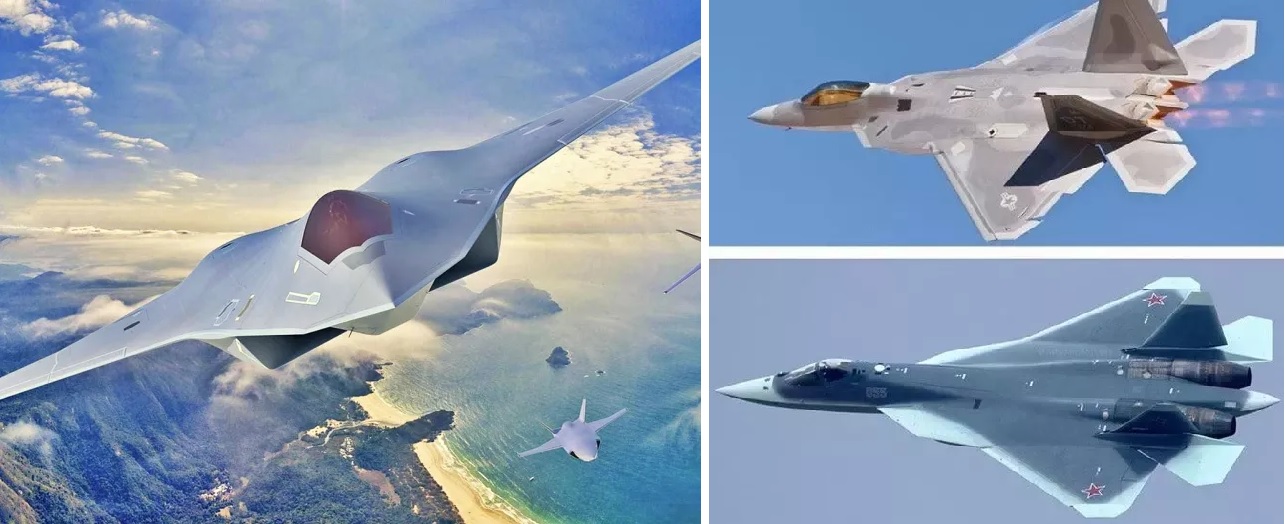 Key Differences Between 5th vs. 6th Generation Fighter Jets
Key Differences Between 5th vs. 6th Generation Fighter Jets
-
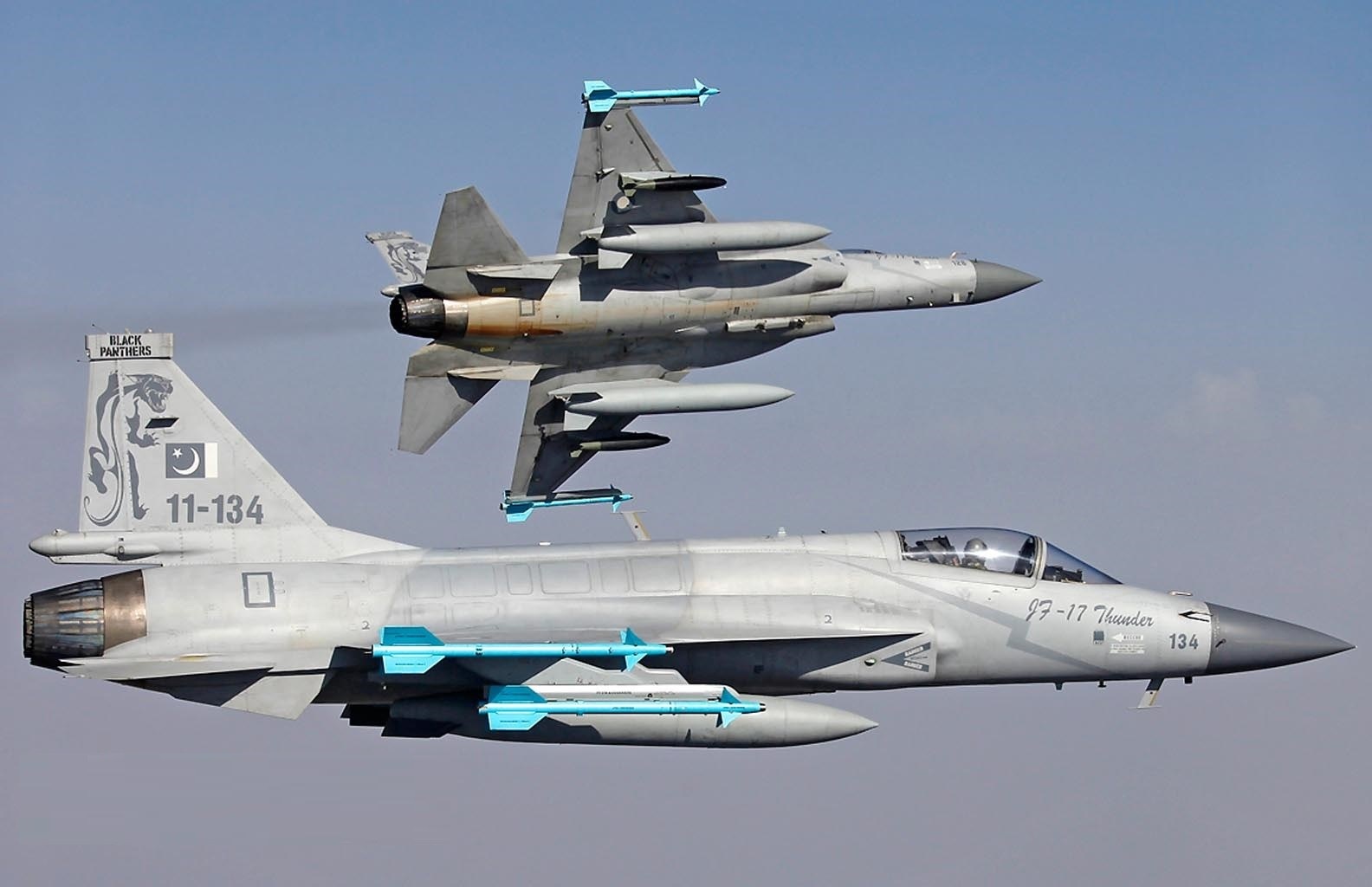 Pakistan Air Force to Unveil Stealth-Enhanced JF-17 Block 4 Fighter Jet by 2028
Pakistan Air Force to Unveil Stealth-Enhanced JF-17 Block 4 Fighter Jet by 2028
-
 Pakistan Announces 15% Increase in Defence Budget for 2024-25 Amid Economic Crisis
Pakistan Announces 15% Increase in Defence Budget for 2024-25 Amid Economic Crisis
-
 India's TEDBF Program Takes Shape First Flight by 2028: Aiming for Naval Supremacy with Advanced Stealth and Technology
India's TEDBF Program Takes Shape First Flight by 2028: Aiming for Naval Supremacy with Advanced Stealth and Technology
-
 India’s AMCA Engine Decision: Safran vs. Rolls-Royce Final Expected by 2025
India’s AMCA Engine Decision: Safran vs. Rolls-Royce Final Expected by 2025
-
 What Would Happen if the USA Left NATO? A Comprehensive Analysis
What Would Happen if the USA Left NATO? A Comprehensive Analysis
-
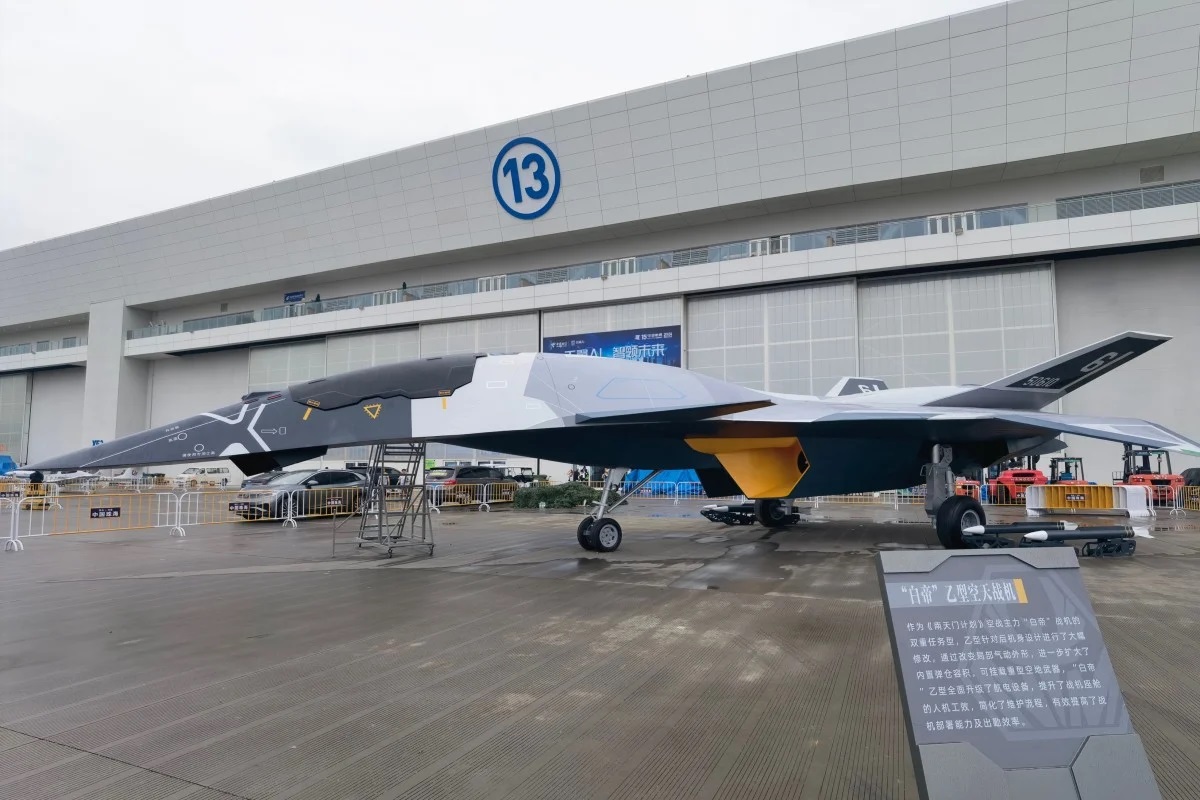 China Unveils the 6th-Generation “Baidi B-Type” Aerospace Fighter Concept
China Unveils the 6th-Generation “Baidi B-Type” Aerospace Fighter Concept
Top Trending in 4 Days
-
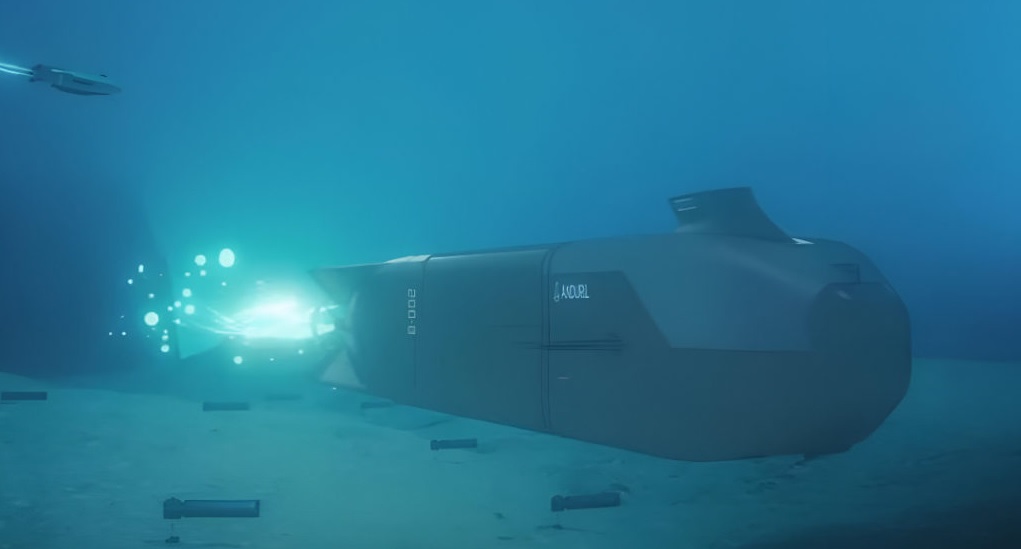 AI-Driven Submarine Hunt Could End Era of “Invisible” Underwater Threats
AI-Driven Submarine Hunt Could End Era of “Invisible” Underwater Threats
-
 U.S. Delegation to Visit India for $4 Billion P-8I Aircraft Deal Talks
U.S. Delegation to Visit India for $4 Billion P-8I Aircraft Deal Talks
-
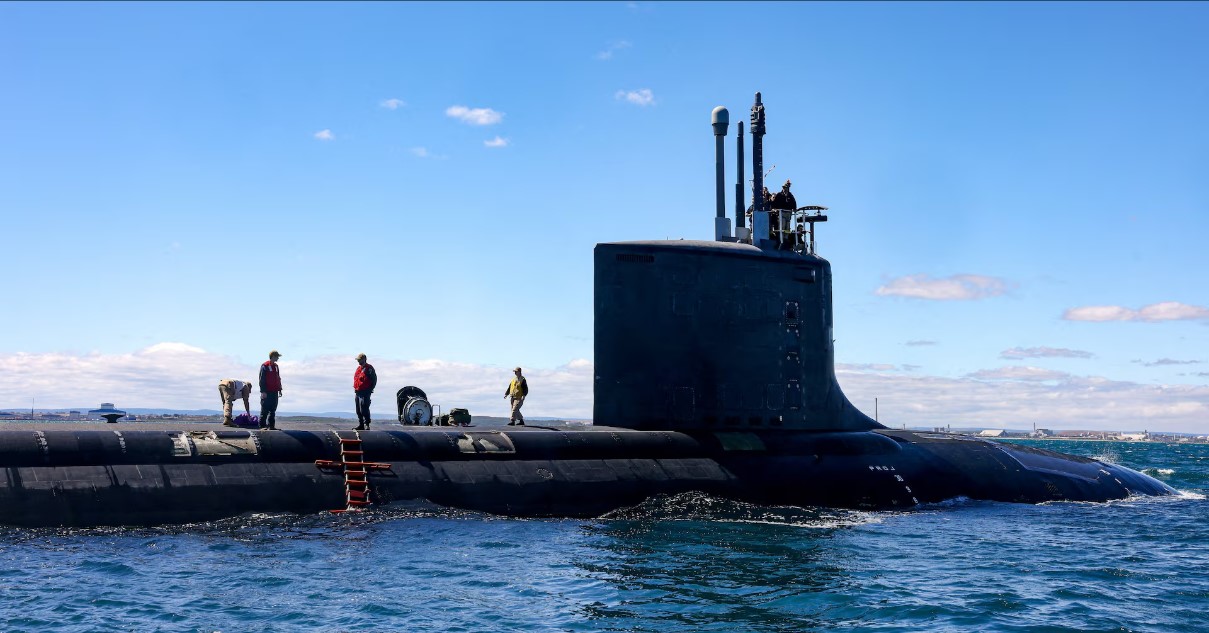 Australia Commits A$12 Billion to Upgrade Henderson Precinct as AUKUS Submarine Hub
Australia Commits A$12 Billion to Upgrade Henderson Precinct as AUKUS Submarine Hub
-
 Defence Ministry Reviews IAF's Proposal for 114 'Made in India' Rafale Fighter Jets
Defence Ministry Reviews IAF's Proposal for 114 'Made in India' Rafale Fighter Jets
-
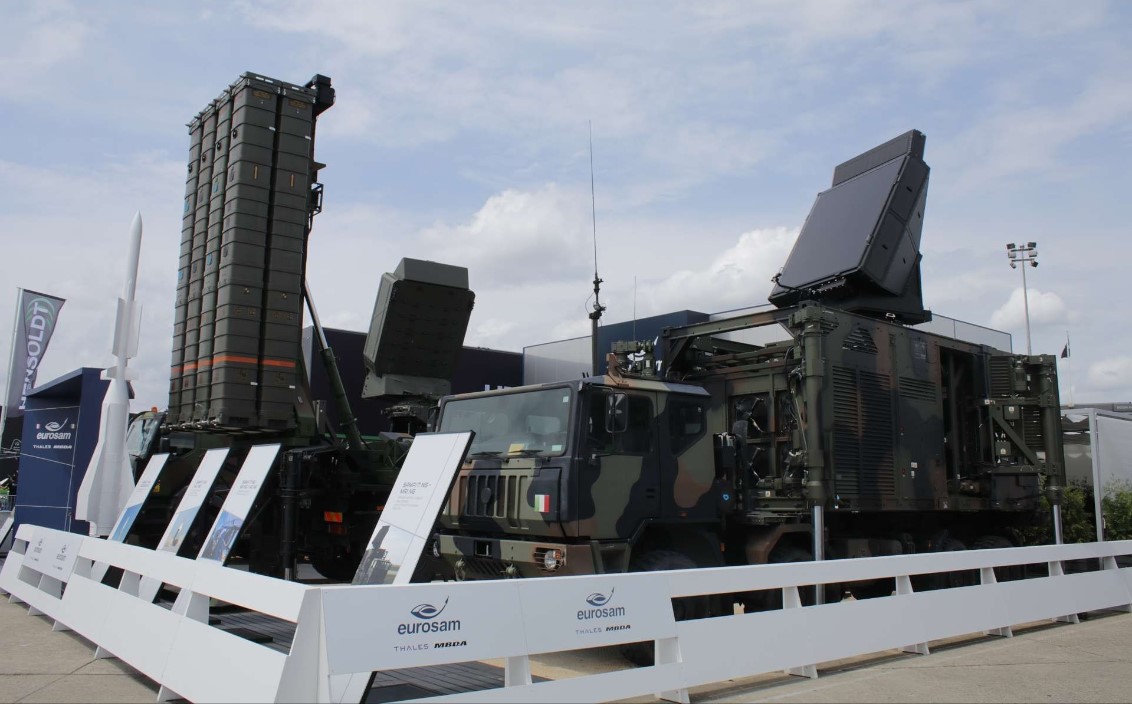 Denmark to Invest $ 9.1 Billion in European Air and Missile Defense Systems
Denmark to Invest $ 9.1 Billion in European Air and Missile Defense Systems
-
 China's AI-Driven Missile Production Line Achieves Over 100 Missiles Per Day
China's AI-Driven Missile Production Line Achieves Over 100 Missiles Per Day
-
 India May Be Invited to Co-Develop Russia’s Il-100 “Slon” as Il-76 Fleet Wanes
India May Be Invited to Co-Develop Russia’s Il-100 “Slon” as Il-76 Fleet Wanes
-
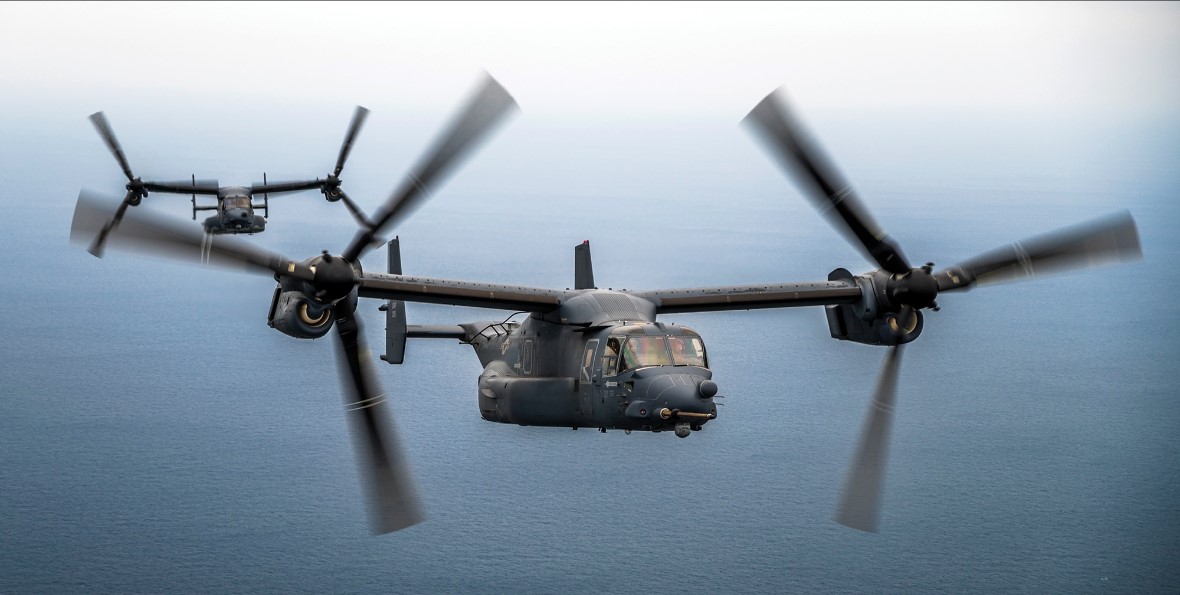 U.S Air Force Refines Plan for New Special Operations “Power Projection Wing” at Davis-Monthan
U.S Air Force Refines Plan for New Special Operations “Power Projection Wing” at Davis-Monthan




















